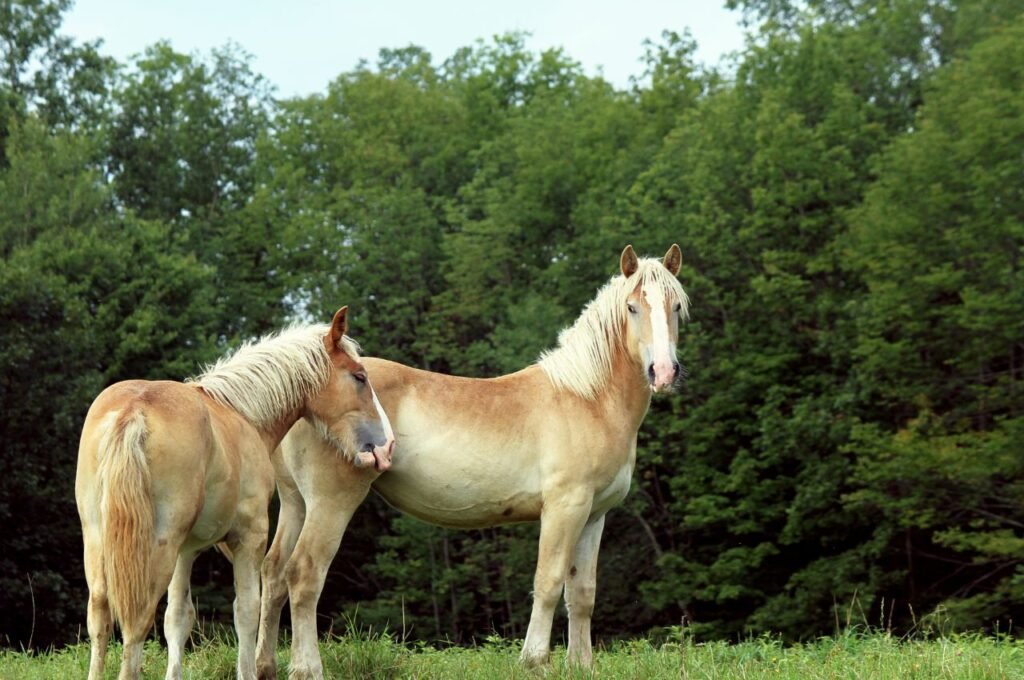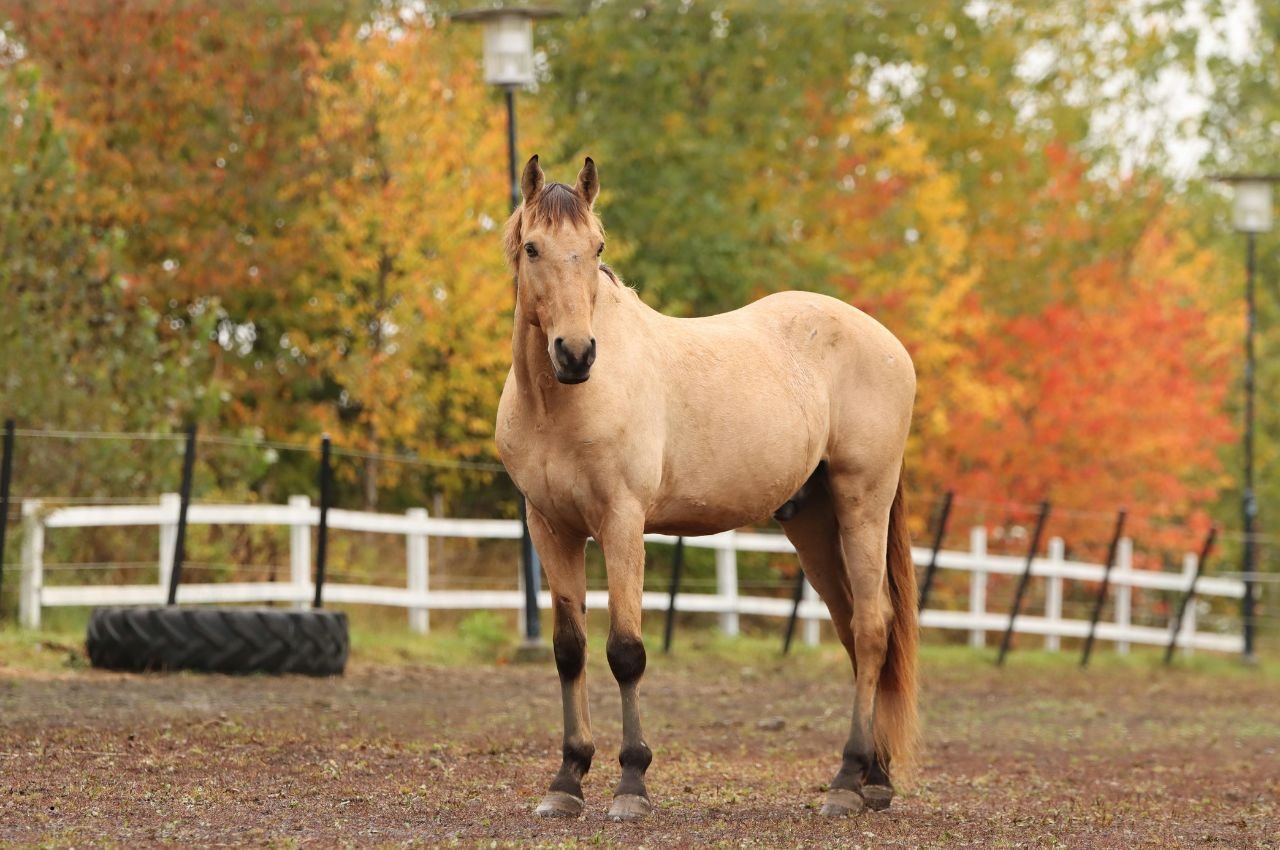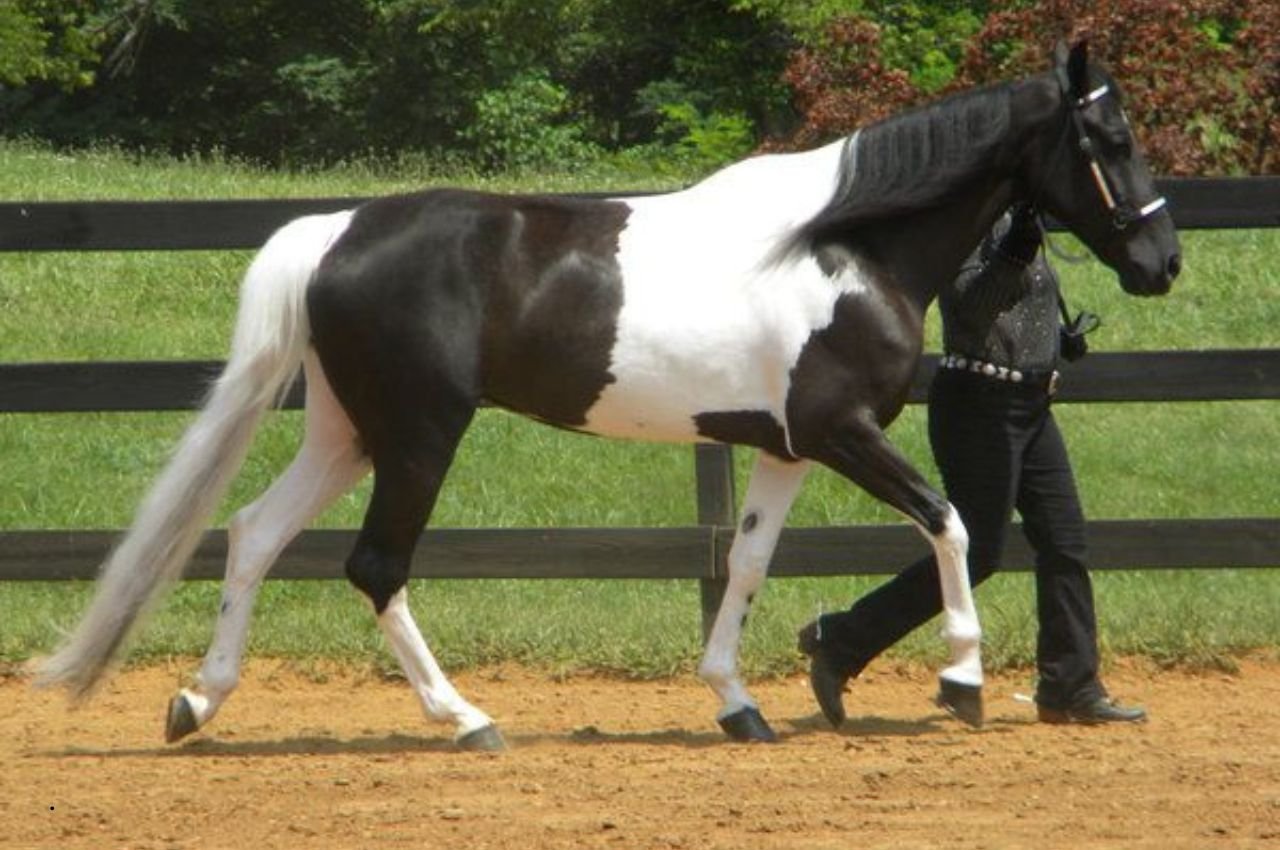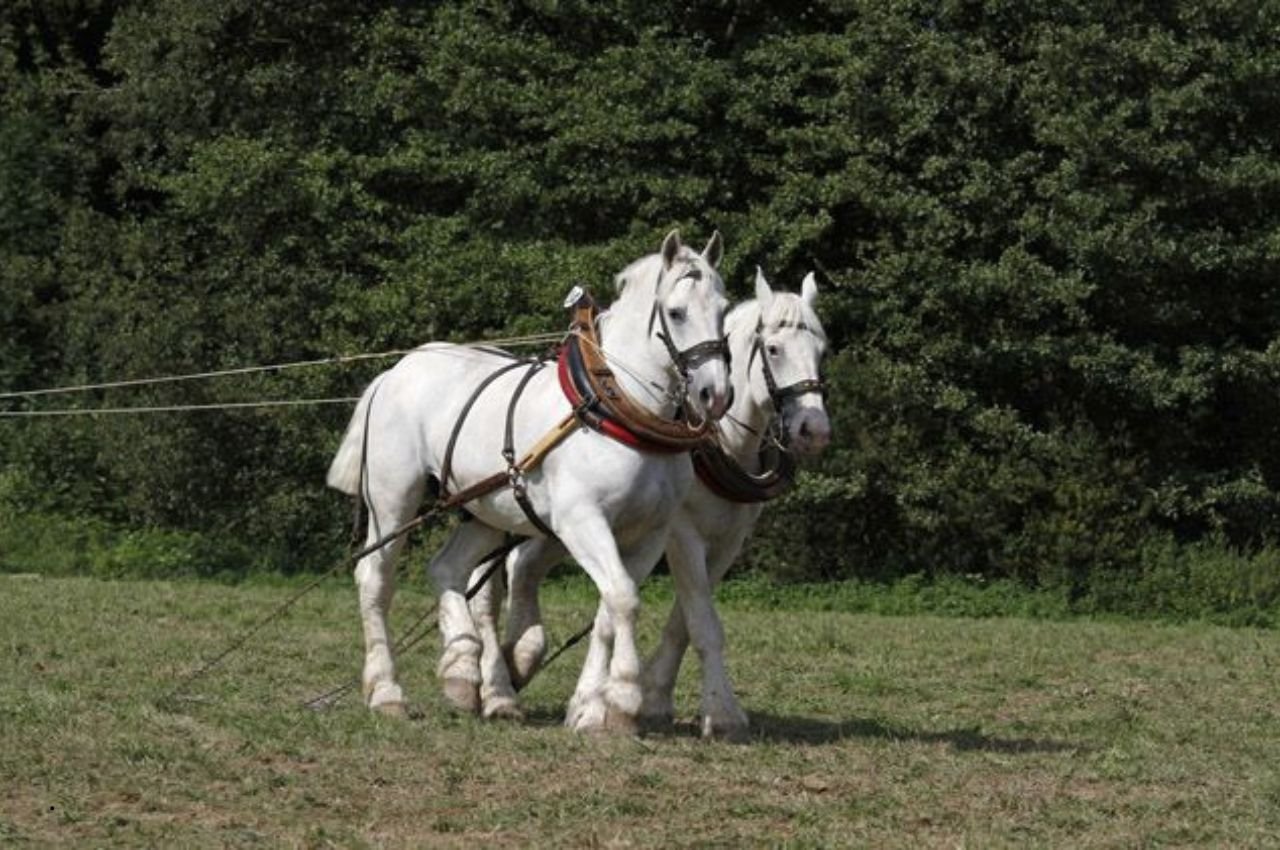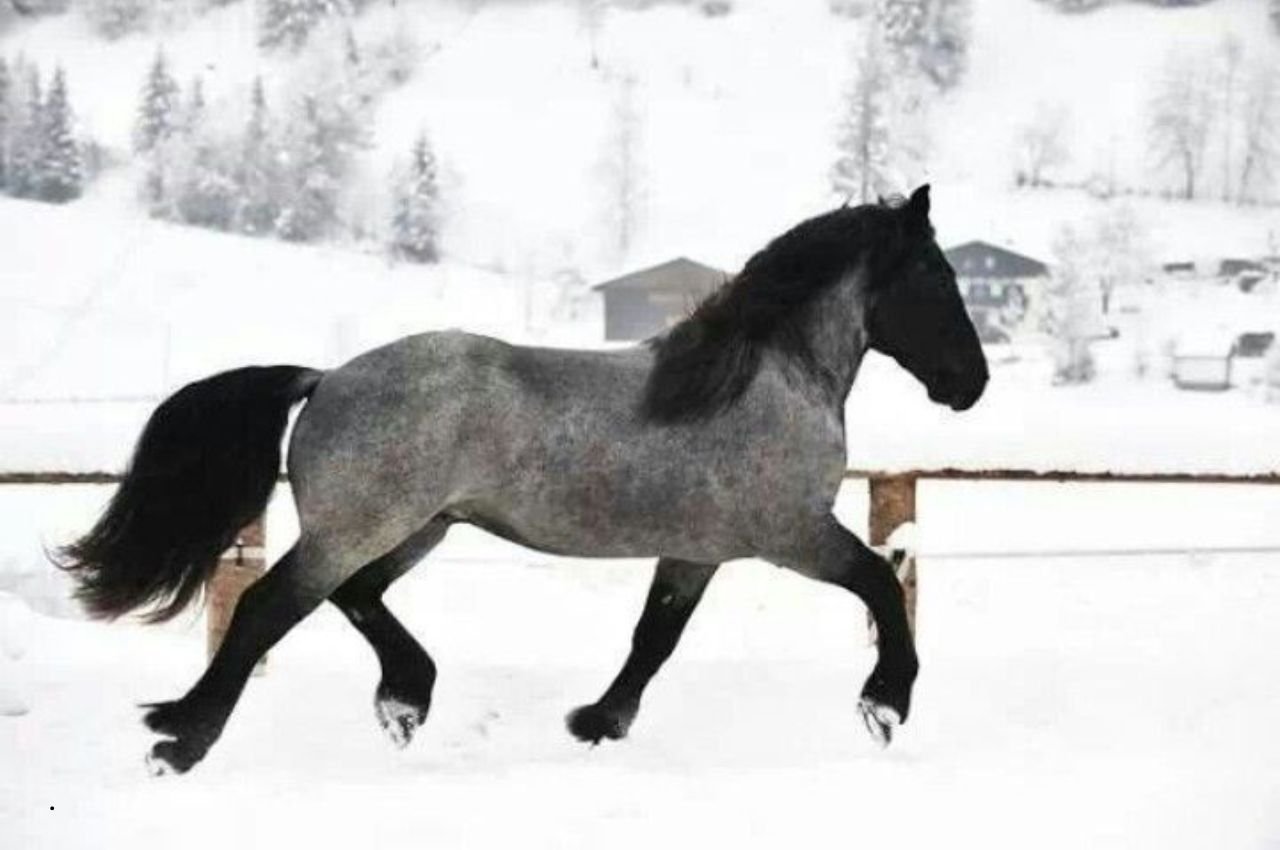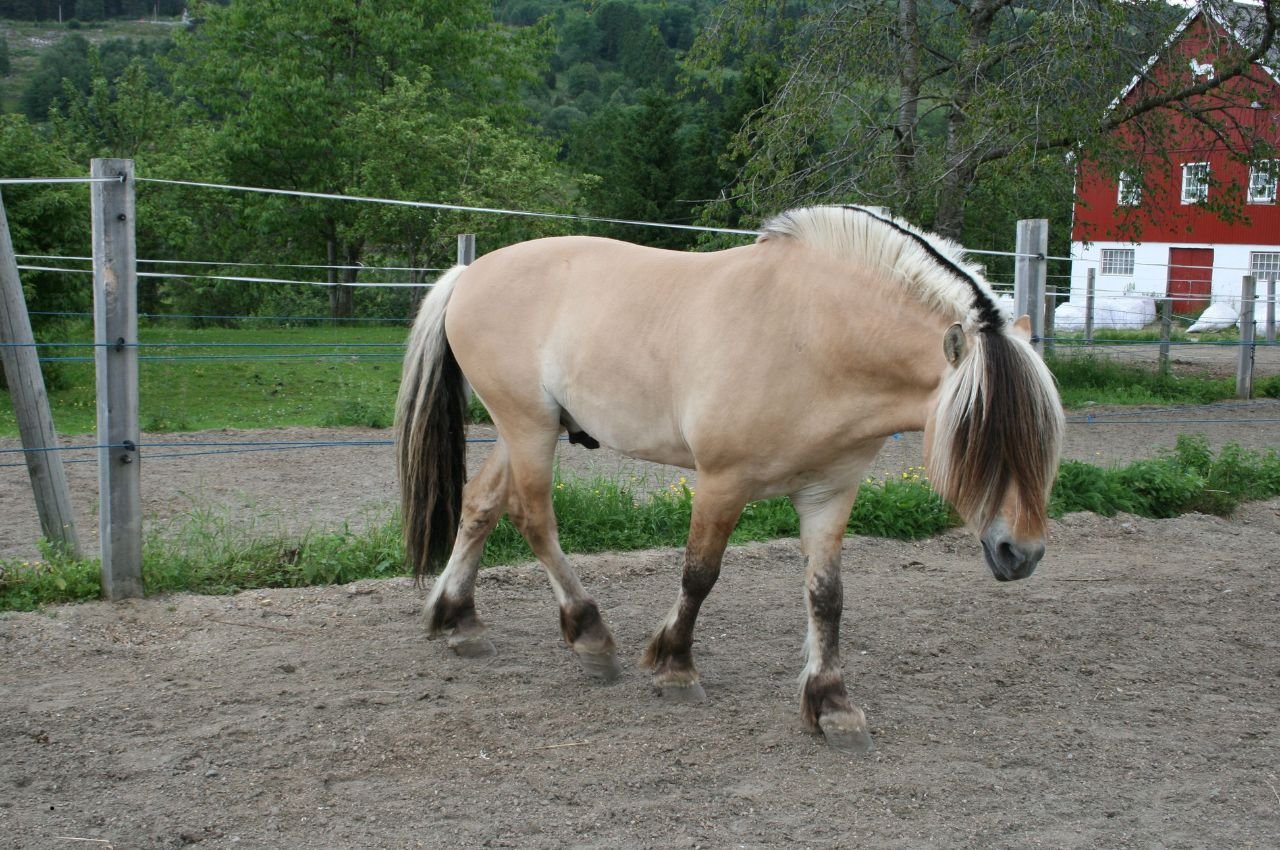The Belgian Draft Horse, a living testament to strength, resilience, and a remarkably gentle spirit, stands as a cornerstone of both agricultural history and modern equine culture. While its ancestors once carried knights into battle, this magnificent breed has since evolved into a versatile and cherished partner for work, sport, and companionship. This comprehensive guide delves into every facet of the Belgian, from its deep historical roots to its specific care requirements, showcasing why it remains a beloved and enduring “gentle giant.”
Table of Contents
The Deep Roots of a Draft Horse Dynasty
The story of the Belgian Draft Horse is intrinsically linked to the history of Western Europe.1 Its lineage is one of the oldest in the world, with its origins tracing back to the mighty horses of the Middle Ages.2 The breed’s direct ancestors were the Brabançon and the Flemish “Great Horse,” massive equines that were instrumental in medieval warfare. These horses possessed a combination of immense power and unflappable temperament, qualities that made them the perfect steeds for carrying armored knights, who could weigh up to 400 pounds in full regalia. This early selective breeding for strength and a calm disposition laid the foundation for the Belgian we know today.
As the centuries progressed, the need for warhorses diminished, but the demand for powerful workhorses surged with the dawn of the Industrial Revolution. Farmers and businesses required equines capable of pulling heavy plows, hauling coal, and transporting goods through burgeoning cities. The Belgian, with its compact, muscular build and incredible pulling power, was perfectly suited for this new era.3 Belgian farmers, particularly in the Brabant region, meticulously bred these horses to maximize their size, strength, and efficiency.4
The breed’s journey to North America began in the late 19th century, where a few select individuals were imported to the United States.5 They quickly gained a reputation as superior farm animals, prized for their tireless work ethic and ease of handling. This newfound popularity led to a boom in imports, and the breed flourished across the American Midwest. The establishment of the Belgian Draft Horse Corporation of America in 1887 was a pivotal moment, providing a formal registry and setting standards that helped to shape the American Belgian into a distinct and highly sought-after type.
However, the breed faced its greatest challenge in the mid-20th century. With the widespread adoption of farm tractors and mechanized machinery after World War II, the demand for draft horses plummeted.6 The Belgian population, which once numbered in the hundreds of thousands, dwindled to just a few thousand, teetering on the brink of extinction. Fortunately, a small but dedicated group of breeders refused to let the breed fade away. Their passion for showmanship and their commitment to preserving the Belgian’s gentle nature and impressive conformation kept the breed alive. In the late 20th century, a renewed interest in heritage breeds, pleasure driving, and sustainable farming practices sparked a revival, bringing the Belgian back from the edge.
Belgian Horse Population Trends (North America)
| Time Period | Estimated Population | Key Event / Status | Historical Context |
| Early 1900s | >100,000 | Peak of agricultural use and widespread popularity | The era of “horsepower” on farms and in cities; Belgians were essential. |
| 1940s-1950s | Drastic decline | The rise of farm machinery (tractors) replaced horses in agriculture | Post-war industrial boom and the mechanization of farming. |
| 1960s | <1,000 | The lowest point in the breed’s modern history, critical conservation status | Few farmers needed workhorses, but a small group of enthusiasts kept the breed alive through showing. |
| 1980s-Present | 4,000 – 5,000 | Renewed interest for showing, pleasure driving, and sustainable farming | A cultural shift towards appreciating heritage breeds and a return to simpler methods. |
The Defining Physical Characteristics
The Belgian Draft Horse is the epitome of raw power and imposing presence.7 Its physical attributes are a direct result of centuries of selective breeding for strength and pulling ability.8
Anatomy of a Belgian Draft Horse
- Head: Proportionally small for its massive body, the head has a straight or slightly dished profile with a kind, intelligent expression.9 Their eyes are large and expressive, and their ears are relatively small and mobile.10
- Neck: Short, thick, and heavily muscled, the neck is set high and well-arched.11 This powerful neck provides the leverage needed for pulling heavy loads and is a key feature of the breed’s impressive silhouette.
- Body: The Belgian’s body is famously compact and muscular.12 It features a broad, deep chest that provides ample room for a large heart and lungs, vital for endurance and strength.13 The back is remarkably short, which adds to its powerful, compact build, while the loins are wide and the hindquarters are massive and rounded.14 The croup is famously split, a classic trait of the breed.
- Legs: The legs are short, thick, and well-muscled with a clean, strong bone structure.15 Unlike other feathered draft breeds, Belgians have minimal “feathering” (long hair) on their lower legs.16 This makes them easier to groom and less susceptible to moisture-related skin conditions.
- Hooves: Their hooves are large, round, and hard, designed to support their immense weight.17 They are generally well-formed and durable, though they require meticulous care to prevent cracking and balance issues.
Size and Weight: A Statistical Breakdown
| Measurement | Geldings | Stallions | Mares | World Record Holder (Gelding) |
| Height (hands) | 16.2-17.2 | 16.2-18 | 16-17 | 20.2 |
| Weight (lbs) | 1,800-2,200 | 1,900-2,300 | 1,700-2,100 | 3,200 |
| Chest Girth | 80-92 inches | 84-96 inches | 78-90 inches | 120 inches (approx.) |
| Cannon Bone | 9-11 inches | 9.5-11.5 inches | 8.5-10 inches | 12 inches (approx.) |
The world record for the tallest and heaviest horse ever was held by a Belgian named Brooklyn Supreme. Born in 1928, he stood at 19.2 hands (78 inches) and weighed an astonishing 3,200 pounds.18 While he was an exceptional individual, his size perfectly illustrates the breed’s potential for immense scale.
Coat Colors: A Signature Look
While other draft breeds come in a wide array of colors, the Belgian is most famous for its distinctive sorrel or chestnut with a flaxen mane and tail.19 This iconic combination, often paired with a white blaze on the face and white stockings, is the most common and sought-after coloration. Other accepted, though less frequent, colors include roan, bay, and gray.20 In some rare genetic cases, a pure white coat can appear, a striking and unusual sight within the breed. The minimal feathering and clean leg lines on these horses truly highlight their muscular and powerful build.
The Gentle Heart of a Giant
The Belgian Draft Horse’s most remarkable characteristic is not its size or strength, but its temperament. They are universally known as “gentle giants” for their calm, patient, and willing nature.21 This temperament is not an accident; it has been a key factor in their selective breeding for centuries.
- Docility and Patience: Belgians are incredibly placid and unflappable. They are rarely skittish or prone to spooking, even in busy or noisy environments.22 This makes them exceptionally reliable in settings like parades, fairs, and therapeutic riding programs.
- Intelligence and Trainability: Despite their size, Belgians are quick learners and eager to please their handlers.23 They respond well to consistent, patient training and form strong, loyal bonds with their owners.24 Their intelligence makes them highly versatile, capable of learning complex tasks for both work and showing.
- Willing Work Ethic: Bred for generations as working animals, Belgians have a strong, inherent work ethic.25 They are willing partners who seem to take pride in their tasks, whether it’s pulling a heavy load, navigating a show ring, or teaching a beginner how to ride.26
- Social and Affectionate: Belgians are naturally social animals that thrive on interaction. They are generally peaceful with other horses and can be very affectionate with humans, often seeking attention and enjoying a good scratch or rub.
This combination of size and gentleness makes them one of the most approachable of all the large breeds, provided they are handled by someone who understands their power.
Meticulous Care for a Massive Horse
Caring for a Belgian Draft Horse is a substantial commitment that requires understanding their unique needs. Their sheer size necessitates specialized care, equipment, and a significant financial investment.
Feeding and Nutrition: Fueling the Engine
A Belgian’s diet is a top priority. Due to their immense body mass, they require a higher volume of food than smaller breeds.27 The foundation of their diet should always be high-quality forage, with grain or concentrates used to supplement their energy needs based on workload.
Daily Feeding Requirements (Detailed Breakdown)
| Feed Type | Maintenance (1,900 lb) | Light Work (2,000 lb) | Moderate Work (2,100 lb) | Heavy Work (2,200 lb) |
| Hay (lbs) | 38-48 (2-2.5% BW) | 35-45 (1.75-2.25% BW) | 30-40 (1.5-2% BW) | 25-35 (1.25-1.75% BW) |
| Grain (lbs) | 2-4 | 5-8 | 9-12 | 12-16 |
| Water (gallons) | 15-20 | 20-25 | 25+ | 30+ |
| Cost Est. (mo.) | $250 – $400 | $300 – $450 | $350 – $500 | $400 – $600 |
Note: The cost of feed can vary dramatically based on location and season.
- Forage Quality: Timothy, orchard grass, and mixed grass hays are excellent choices. For working horses, a small amount of high-protein hay like alfalfa can be beneficial but should be carefully monitored to prevent excessive weight gain.
- Grain & Concentrates: Commercial feeds formulated for draft horses or a mixture of oats, barley, and corn can provide the necessary energy. It’s crucial to adjust the amount of grain based on the horse’s body condition score and workload to prevent obesity and related health issues like laminitis.28
- Supplements: Due to their heavy weight, Belgians often benefit from joint supplements containing glucosamine, chondroitin, and MSM. Biotin supplements are also common to support strong, healthy hooves.
Grooming and Hoof Care: A Necessity
While Belgians have less feathering than other draft breeds, a consistent grooming routine is essential.29
- Daily Brushing: Regular brushing not only keeps their coat clean and healthy but also serves as a daily health check, allowing you to feel for any injuries, swelling, or heat.
- Hoof Care: Their large hooves are built for power but are also under immense stress.30 A professional farrier experienced with draft horses should trim their hooves every 6-8 weeks. Improper trimming can lead to serious lameness issues. Some working Belgians will need specialized draft horse shoes.
- Skin Care: Their clean legs make them less prone to moisture-related skin conditions like “scratches” or “mud fever,” but daily checks are still important, especially during wet weather.
Health & Wellness: Managing the Big Picture
Belgians are generally robust and hardy, but their size makes them susceptible to certain health conditions that owners must be vigilant about.31
Common Health Issues in Belgian Draft Horses (Detailed Analysis)
| Health Condition | Description | Risk Level | Prevention / Management |
| Polysaccharide Storage Myopathy (PSSM) | A genetic muscle disorder that causes muscle stiffness, cramping, and pain. It is a significant concern in many draft breeds, including Belgians. | High (Genetic) | Genetic testing is available to identify affected horses. The condition is managed with a low-starch, high-fat diet and consistent, moderate exercise. |
| Equine Metabolic Syndrome (EMS) | A hormonal disorder that can lead to obesity and laminitis. Belgians, with their “easy keeper” metabolism, are particularly susceptible. | Medium (Diet/Management) | Strict diet control, limited access to lush pastures, and regular exercise are key to prevention. |
| Joint Issues / Arthritis | Due to the immense weight they carry, Belgians can be prone to degenerative joint diseases as they age. This risk is exacerbated by heavy work or excess weight. | High (Age/Weight) | Proactive management includes maintaining a healthy body weight, providing joint supplements, and a consistent exercise program to keep joints mobile. |
| Laminitis / Founder | A painful and potentially devastating inflammation of the hooves. In Belgians, it is often triggered by a diet that is too high in sugar or starch, particularly from lush spring pastures. | High (Management) | The most effective prevention is careful diet management. Limit grazing on high-sugar grasses and feed a low-starch, high-fiber diet. |
| Heat Stress | Belgians’ large muscle mass can generate a lot of heat, making them susceptible to overheating in hot and humid climates. | Medium (Environmental) | Provide plenty of shade, access to fresh, cool water, and avoid heavy work during the hottest parts of the day. |
Comprehensive Preventive Care Schedule
| Frequency | Recommended Care | Purpose |
| Annually | Full veterinary check-up, dental exam, vaccinations (Tetanus, EEE/WEE, Rabies, etc.) | Overall health assessment, disease prevention, and addressing dental issues. |
| Twice Annually | Fecal egg count and strategic deworming | Targets specific parasites and prevents resistance to deworming agents. |
| Every 6-8 Weeks | Farrier visit for trimming/shoeing | Maintains hoof health, prevents imbalance and lameness. |
| Daily | Grooming, leg checks, monitoring food & water intake | Early detection of injuries, skin problems, or health changes. |
The Modern Role of the Belgian
While the era of the workhorse has passed, the Belgian Draft Horse has found a new and celebrated place in our modern world. Their versatility and temperament make them ideal for a variety of roles, moving beyond the farm to the show ring and beyond.
- Driving and Hitch Work: This is the most popular modern use for Belgians. Their power and quiet nature make them ideal for pulling carriages, wagons, and sleighs.32 Multi-hitch teams of 4, 6, or even 8 Belgians are a magnificent sight at fairs and shows.
- Showing: Belgians are a staple at draft horse shows and county fairs. They compete in halter classes, where their conformation and breeding are judged, as well as hitch classes that showcase their pulling ability and grace.
- Riding: Although not a typical riding horse, Belgians are gaining popularity for pleasure riding, particularly for larger riders who appreciate their smooth, comfortable gaits and calm demeanor.33 Special draft-sized saddles and tack are required.
- Therapeutic Riding: The Belgian’s gentle and patient temperament makes it an excellent choice for therapeutic riding programs for individuals with physical or cognitive disabilities.34 Their steady presence provides a sense of security and confidence.
- Sustainable Agriculture: On a smaller scale, Belgians are making a comeback in sustainable and organic farming, where their low-impact on the soil is preferred over heavy machinery. They are used for plowing, logging, and other tasks in an environmentally friendly way.35
- Commercial and Promotional Use: Belgians are a powerful symbol of strength and heritage, which is why some breweries, tourist attractions, and historical sites use them for promotional purposes and authentic experiences.
Economic Considerations and FAQs
Owning a Belgian is a substantial financial and time commitment. The initial purchase price is just the beginning; the real cost lies in their ongoing care.
Cost Comparison: Belgian vs. Light Horse
| Expense Category | Belgian Draft Horse (Annual Cost) | Average Light Horse (Annual Cost) |
| Feed (Hay & Grain) | $3,000 – $6,000 | $1,500 – $3,000 |
| Veterinary Care | $600 – $1,800 | $400 – $1,200 |
| Farrier Services | $1,200 – $2,400 | $500 – $1,000 |
| Boarding | $500 – $1,000+/month | $300 – $700/month |
| Total Annual Cost | $4,800 – $10,200+ | $2,700 – $6,200+ |
Note: These are estimates and vary significantly by region and quality of care.
Frequently Asked Questions (FAQs)
Q: Are Belgian Draft Horses good for beginners?
A: While their temperament is ideal for beginners, their sheer size requires a handler who is confident and physically capable of controlling a 2,000-pound animal. They are best suited for beginners who have access to an experienced mentor.
Q: How much space do they need?
A: Belgians need substantial living space. Stalls should be at least 14×14 feet with high ceilings. Pastures should have sturdy, high fencing and at least 2 acres per horse.
Q: Can they be ridden?
A: Yes, many Belgians are trained for riding and can make excellent trail partners.36 Their large, smooth gaits are comfortable, but special draft-sized tack and saddles are necessary.
Q: What’s the difference between an American Belgian and a European Belgian?
A: American Belgians, heavily influenced by early 20th-century breeding, are generally larger and have a more uniform sorrel and flaxen coloration. European Belgians (or Brabançons) can be slightly smaller and come in a wider variety of colors, including various shades of roan.37
Q: Are Belgian horses endangered?
A: Unlike some other draft breeds, the Belgian is not considered endangered or at-risk by most conservation organizations. Their population is stable in North America, and they remain one of the most popular and commercially viable draft breeds.
Conclusion
The Belgian Draft Horse is more than just a large animal; it is a symbol of enduring strength, gentle character, and a history that helped build the modern world. From carrying knights into battle to powering farms and captivating audiences in the show ring, the Belgian has adapted and thrived. For those considering adding one to their lives, the commitment is significant, but the reward is immeasurable: a loyal, powerful, and truly gentle giant.

